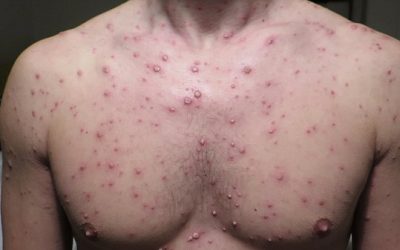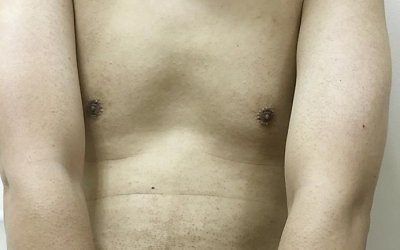Contagious IMPETIGA
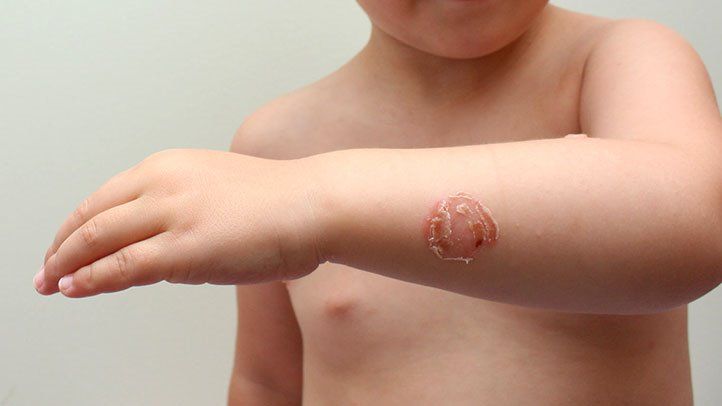
-
- Impetigo is most commonly caused by a bacterium called Staphylococcus aureus
- Less commonly, the infection is caused by another bacterium – group A streptococcus Streptococcus pyogenes
- Both bacteria can cause pyoderma
- Impetigo is usually spread from person to person through direct skin to skin contact
- Bacteria on healthy skin or through small cuts, scratches or other small openings (e.g. caused by insect bites) cause pyoderma
- Impetigo infection spreads easily, especially between people who live together or who often spend time together (e.g. in a kindergarten group).
Clinic
-
- Impetigo rashes are most often seen on the face, hands or feet;
- Symptoms such as fever, severe pain, increasing redness and swelling, or loss of appetite indicate a more serious infection. If you are bothered by the following symptoms, contact your healthcare professional urgently
Rashes:
-
- papules, vesicles and pustules (pustules);
- yellow, golden, brown scabs
- fluid-filled or flaccid blisters
- ulcers with raised edges
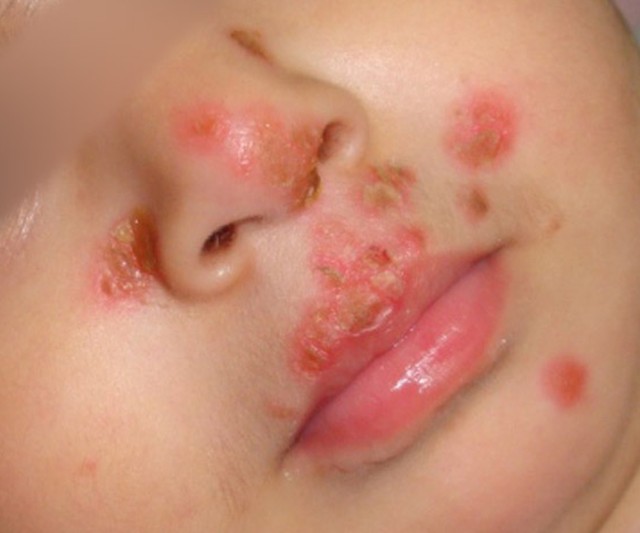
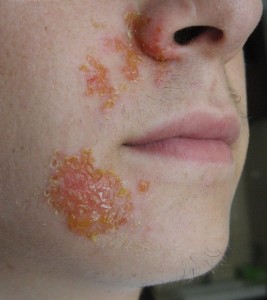
- Non-bullousis the most common form. Characteristic papules, vesicles with surrounding erythema (redness). As the rash progresses, abscesses appear, which quickly enlarge and break out to form a yellowish scab.
- Bullous – as the vesicles grow larger, blisters with yellowish fluid form. Blisters filled with fluid become cloudy, and brown scabs form when the blisters rupture.
- Ecthema – damage to the superficial (epidermis) and deep layers of the skin, resulting in painful sores with yellow scabs and raised edges.
-
- Impetigo is usually diagnosed on the basis of clinical signs, symptoms
- Treatment can be started without any tests
- To determine the cause (which bacteria caused the disease), bacteriological tests (culture), gram staining
- As the disease spreads, blood tests may show an increase in the number of leukocytes in the blood and an increase in C-reactive protein.
Treatment
-
- See a dermatovenereologist for an accurate diagnosis and appropriate treatment
- Treatment of impetigo is important to reduce the spread of infection, reduce discomfort and improve appearance
- Blistering and non-bullous impetigo are treated with topical (applied) or systemic (oral tablets or capsules) antibiotics
- Local (topical) antibacterial treatment is used for patients with limited, localised skin lesions, while systemic treatment is used for patients with a widespread rash or deep lesions.
- Ectema is always treated with systemic medication.
Advice To reduce the spread:
-
- Wash your hands frequently with soap and water (no matter what you touch) or disinfect them
- Do not share personal items such as hairbrushes, towels, clothes, bedding (wash in hot water).
- Do not share personal items such as hairbrushes, towels, clothes, bedding (wash in hot water).
- If the rashes are wet, they must be covered. Use disposable wipes to blow your nose.
- If you sneeze, cover your mouth with your shoulder or forearm, otherwise bacteria from your nose and mouth will end up on your hands and anything you touch.
- Return to kindergarten, school – children can return 24 hours after starting effective antimicrobial treatment.
- If your infectious impetigo recurs, contact your dermatologist.

Chickenpox
Chickenpox, or varicella, is a highly contagious viral infection that causes an itchy, blister-like rash. Early treatment and proper skin care are essential to managing symptoms and preventing complications. Learn how to care for chickenpox-affected skin.
Keratosis pilaris – goosebumps
Keratosis pilaris, often called goosebumps or follicular keratosis, is a common skin condition that causes rough, bumpy patches. While harmless, it can be managed with treatments that smooth the skin and improve texture.
Nummular Eczema
Nummular eczema is a chronic skin condition characterized by itchy, coin-shaped patches that can persist for months. Effective treatments focus on relieving symptoms and preventing flare-ups to maintain healthy skin and improve comfort.
iDerma
MB iDerma
Fabijoniškės g. 99, Vilnius
+370 670 70 822
[email protected]


